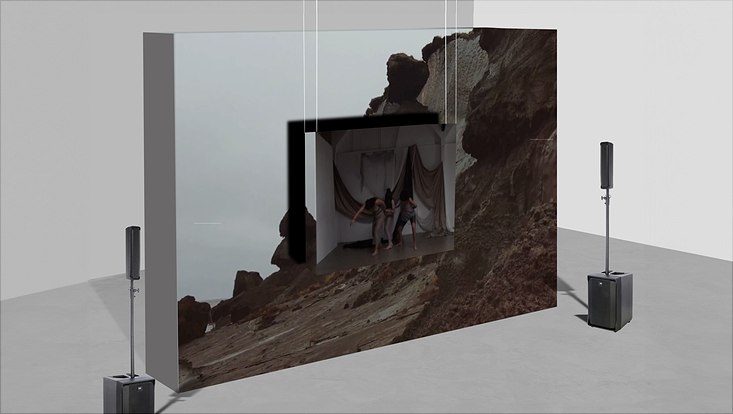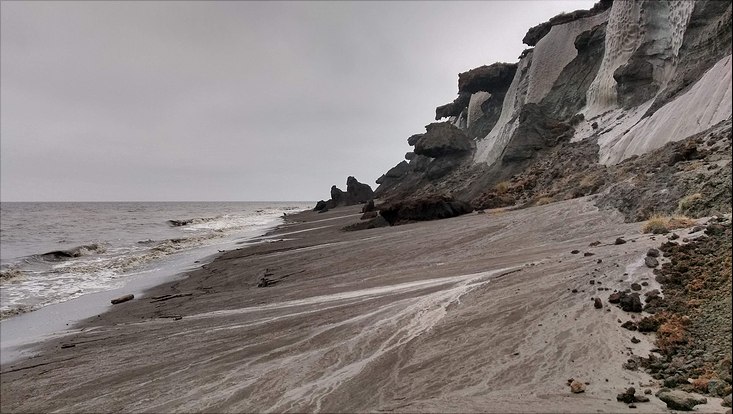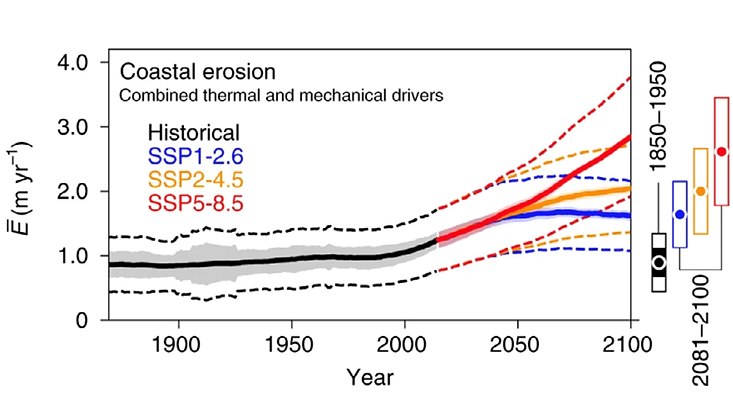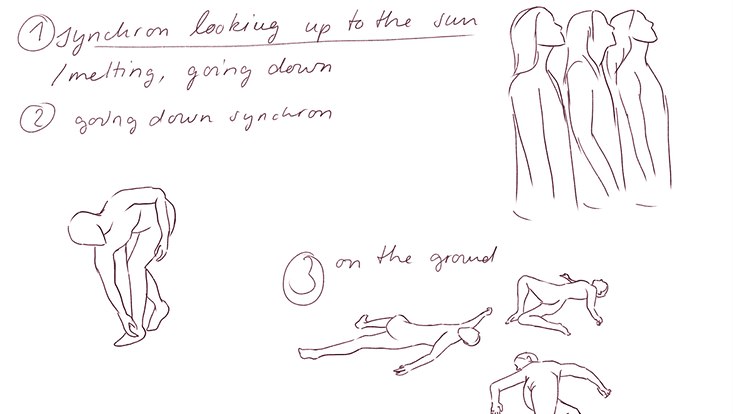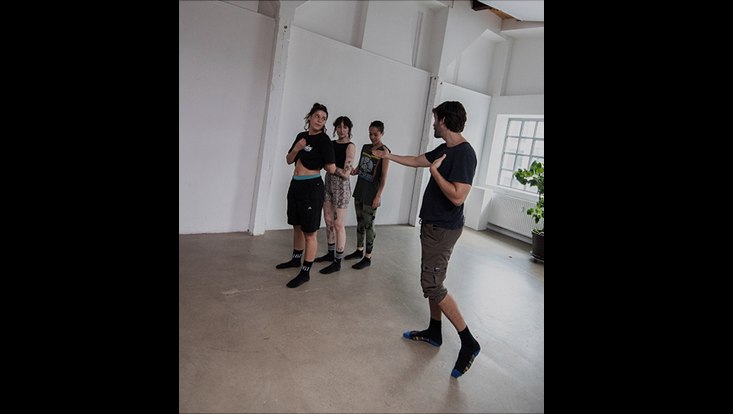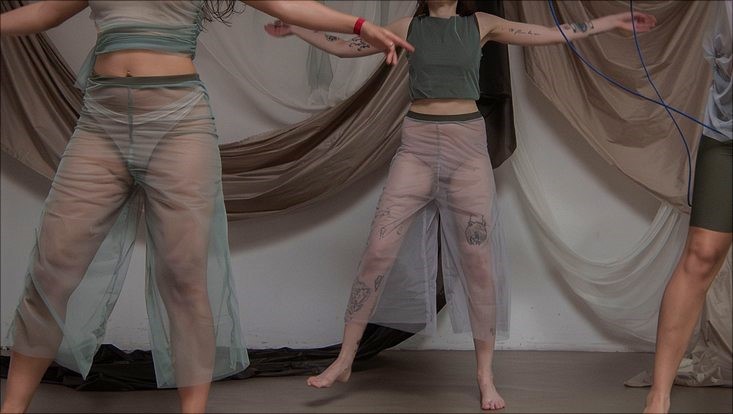Journey Through Time and into the Future
Climate change has dramatic impacts on the Arctic region, which is warming three to four times faster than the global average. Sea ice is melting and allowing waves to form and propagate through the Arctic Ocean. Increasing temperatures thaw the Arctic permanently frozen soil – permafrost – which is not as frozen as before. Consequently, the combination of longer ice-free periods and stronger waves is leading to increased erosion of the unstable Arctic permafrost coast more and more every year. In the future, Arctic coastal erosion is projected to accelerate even further, as climate change progresses. The pace of acceleration, however, ultimately depends on our actions — specifically, our greenhouse gas emissions from fossil fuels.
In this project David Nielsen, a climate researcher, and the artist Jenni Schurr start from David’s research which depicts how the erosion of the Arctic coastal permafrost is projected to develop in the future, depending on human emissions. A paper recently published in Nature Climate Change highlights how coastal permafrost erosion is contributing to a decrease in CO2 uptake by the Arctic Ocean (Nielsen et al., 2024).
“Coproduction takes place in the space of ideas.” – Dr. David Nielsen
David and Jenni created a portrait of the accelerating motions of coastal erosion according to three different future emission scenarios. These represent, roughly spoken, the committed climate protection measures, a slight improvement in reducing CO2 emissions, and the "business as usual" scenario. Through artistic interpretation, Jenni personalizes these scenarios via a video performance. The multimedia installation highlights the close connection between anthropogenic climate change and the dramatic transformations occurring in Arctic processes, which are increasingly asynchronous and chaotic. The video and audio components in the installation invite to embark on a journey through time and into the future. The rustling of the wind and the crashing of the waves blend with the sounds of the performance, forming a powerful symphony of human and nature. The boundaries between the performers and their surroundings blur, and what was once perceived as separate and independent becomes an inseparable part of a larger whole.
“Our collaboration is a bit like dancing.” – Jenni Schurr
From this symbiosis of movement, sound, and image emerges a metamorphic connection that captures the complexity and fragility of our planetary ecosystem. The performance does not end with the last movement or the final sound; instead, it continues to resonate in the thoughts and emotions of the audience, serving as a reminder that climate change is not just a scientific question but an existential challenge that we all must confront.
References
Nielsen, D. M.; Pieper, P.; Barkhordarian, A.; Overduin, P.; Ilyina, T.; Brovkin, V.; Baehr, J.; Dobrynin, M. (2022): Increase in Arctic coastal erosion and its sensitivity to warming in the twenty-first century. Nature Climate Change, 12, 263–270. https://doi.org/10.1038/s41558-022-01281-0.
Nielsen, D. M.; Chegini, F.; Maerz, J.; Brune, S.; Mathis, M.; Dobrynin, M.; Baehr, J.; Brovkin, V.; Ilyina, T. (2024): Reduced Arctic Ocean CO2 uptake due to coastal permafrost erosion. Nature Climate Change. https://doi.org/10.1038/s41558-024-02074-3.

